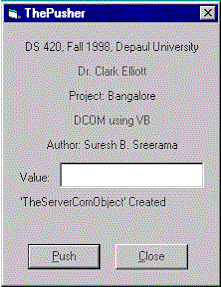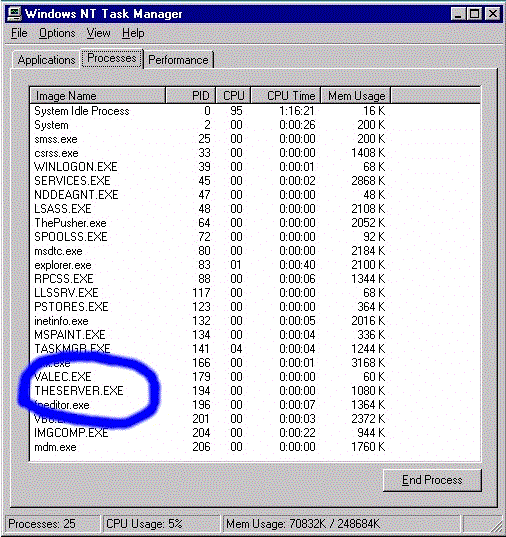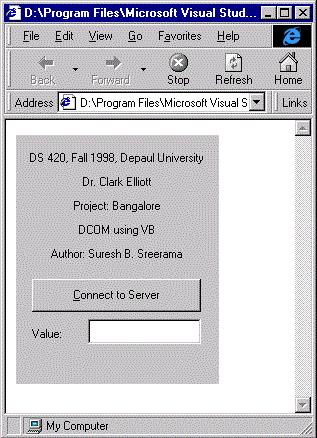| ThePusher is a regular VB Windows application. (Select File->New
Project->Standard Exe) Upon Startup (In the Form_Load Event) the
ThePusher application creates an instance of the IDataServer Interface by calling
the VB operator New() API (Use could also use the
CreateObject() API).
The Pusher application sports a edit box and a button that invokes a method
UpdateData(lNewValue) in the IDataServer interface supported by the
DataServerApplication.
The following brief list of operations/funtions performed by the VB Pusher applicaton
and the corresponding ones that were used in the C/C++ DCOM assignment:
| Function/Operation |
VB |
C/C++ |
| Creating an Instance of the TheServerComObject: (Or for
IUnknown) |
Used the New() Operator. Ex. Set
m_TheServer = New TheServerComObject
VB does the equivalent of CoCreateInstance() behind the scenes. |
Used CoCreateInstance() API |
| Checking for Success/Failure |
Compare the return value of New() with Nothing. Ex. If m_TheServer Is Nothing Then
' Failure
Else
' Success
End If |
Compare the returned HRESULT for S_OK. |
| Query Interface for the IDataServer Interface |
Use the Set statement and VB performs the
QueryInterface() behind the scenes. Ex.
Set m_IDataServer = m_TheServer |
Invoke QueryInterface() or use ATL's CComPtr<T> wrapper class. |

|


